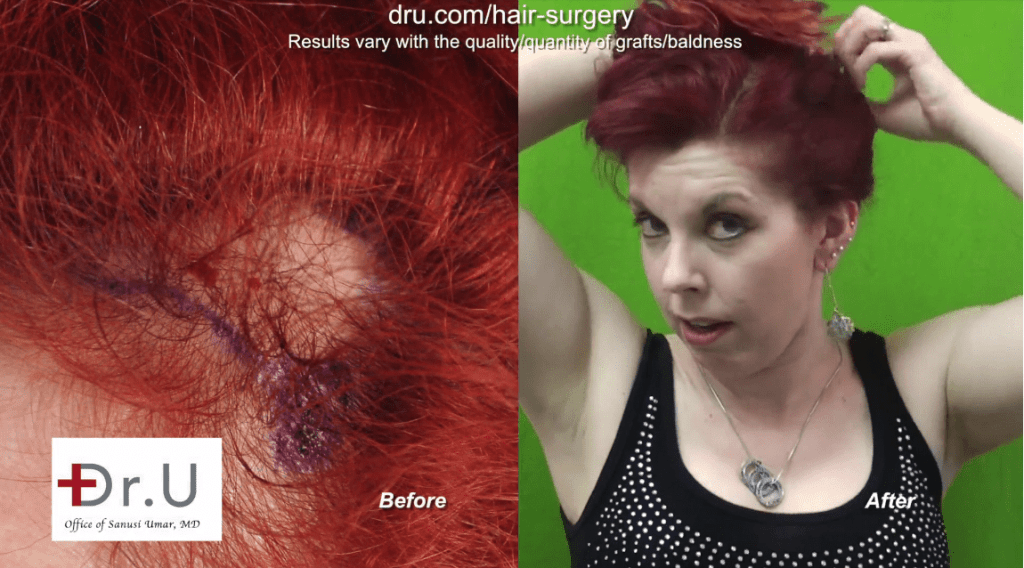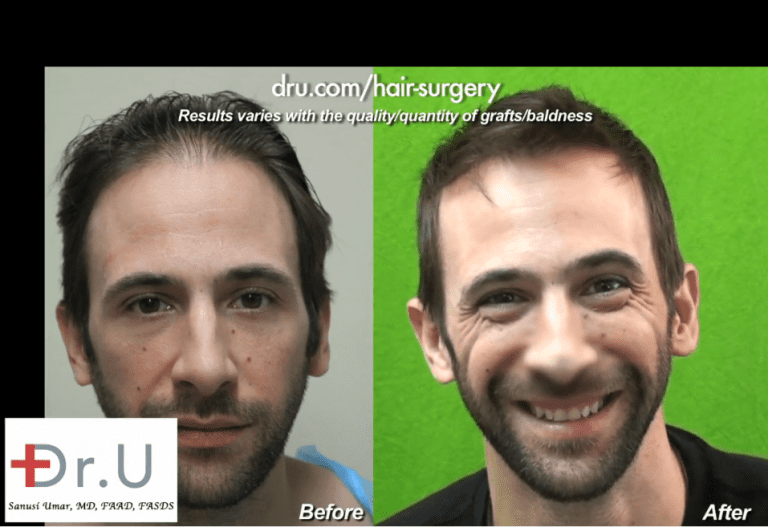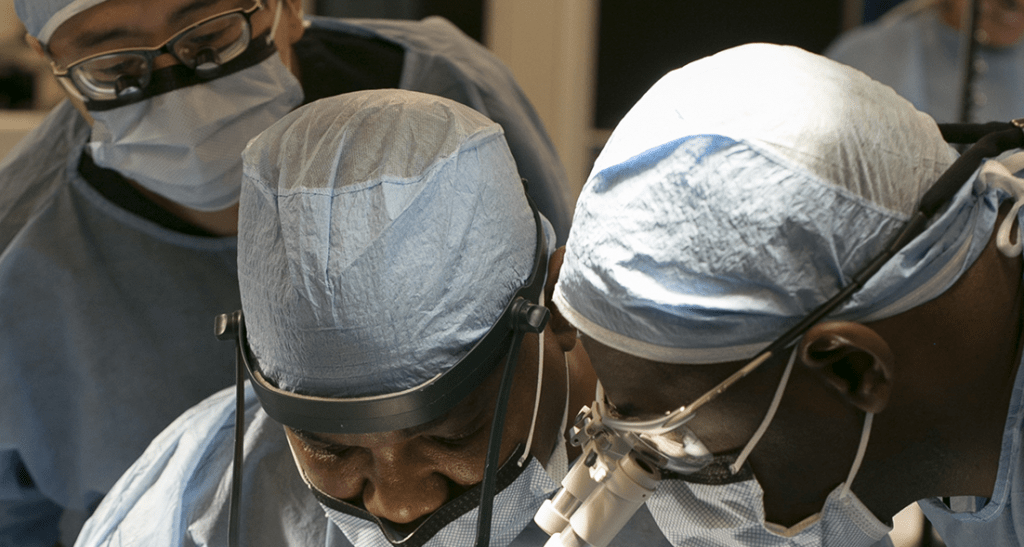Published on July 22, 2021. Last Updated on July 22, 2021.
Hair loss occurs differently for different people. This happens because there are many factors at work. Some examples may include:
- type of hair loss causes
- the progression of specific hair loss conditions (e.g., androgenic alopecia, etc.)
- genetic factors
- stage of hair loss progression
- the interaction of environmental and genetic factors
- pre-existing medical conditions
- diet and nutrition
- sun exposure
- various types of stress
With the consistent use of well-formulated oral and topical treatments, it may be possible for individuals to experience the prolific growth of new hair, minor recovery from male and female pattern hair loss, and even noticeable improvements in the texture and quality of the hair itself.
However, some instances in which oral and topical supplements may be less effective for certain men and women.
In these types of instances, hair loss is less than likely to be reversed due to the compromised condition and state of the hair follicles.
Androgenic Alopecia in Men and Women
For male and female pattern baldness, hair follicles miniaturize due to the interaction between DHT androgens and the sensitive nature of protein receptors embedded in them.
Traction Alopecia Caused By Unsafe Hair Styling Practices
Another common form of hair loss is known as traction alopecia. This condition occurs as a result of tightly pulling hairstyles which add tension to the hair follicles. Examples include ponytails, buns, weaves, tight braids, extensions, etc. The constantly applied pressure may impose the risk of damaging the growth structures within the follicles.

In severe phases of the condition, these injuries may be irreversible.
Hair Transplantation Offers A Reliable Approach For Recovering Hair
When your hair follicles are irreversibly damaged, is it even possible to ever experience renewed growth? With the responsible and ethical practice of hair transplantation, the answer is yes.

What Is A Hair Transplant Procedure
Hair transplant surgeries involve transferring healthy, long-term follicles to regions of the scalp affected by thinning or baldness. Provided that these grafts have not suffered any form of damage, they will likely assimilate well to their new location and produce new hair as they did before.
Procedures can be thought of in terms of two distinct stages.
- Harvesting of hair follicle units (i.e., donor grafts)
- Insertion of grafts into the target recipient areas of the scalp
Hair transplant outcomes cannot always be perfect in terms of growth and the overall quality of results. And, nor can patients always expect predictable yield.
However, it is always possible to attain the best possible results by choosing a qualified and highly skilled surgeon who has demonstrated a strong track record of producing successful patient outcomes. Optimal hair transplant outcomes help patients look better and feel better and even heal psycho-emotional scars associated with their hair loss [1].
What to Look For In A Hair Transplant Doctor

In the hands of an exceptional and caring hair transplant provider, your chances of achieving the best possible outcome would be far more reliable compared to a practitioner with less experience. Here are a few things to look for:
- before and after photos of specific patients taken at different angles
- testimonials of patients stated in their own words
- videos that feature before and after images as well as the patients themselves speaking about their overall experience
- patient case studies with written details on how the procedures were carried out.
Another important consideration is that there are now countless hair transplant tools and technologies available, including robotics. Many procedures are being marketed according to the brands associated with these systems.
If your hair loss is severe (e.g., Norwood 6-7) and requires a large number of grafts, scalp hair alone would not provide the complete supply of donor hair follicles that you would need for your hair restoration procedure. A more feasible strategy would involve the use of non-head hair to augment your donor graft supply.
As someone considering a hair transplant procedure, it is worth investing the time to understand the basics of these technologies and how they produce the final desired results. Try to ask as many questions as possible. It should make logical sense how the results were achieved, starting from the beginning (i.e.point A) to the results (i.e., point B).
What to Avoid

As you look for the right hair transplant provider, you should likewise understand the factors to avoid when it comes down to making the right decision. These include:
- marketing gimmicks that seem to overpromise
- one-on-one consultations conducted by sales teams, not the actual doctor
- conspicuously cheap pricing, well below average market rates
Some clinics still offer outdated, highly invasive procedures incorporating hair transplant procedures as the final finishing stage. These include hair flap and scalp reduction procedures. In both cases, the surface of the scalp is surgically excised, creating permanent anatomical changes.
In hair flap surgery, a narrow strip of the scalp (at the hairline border) is cut using a scalpel. The section is then twisted and wrapped around the forehead to create a lowered hairline. To cover the linear scarring, the surgeon uses hair transplantation to place new hair follicle grafts.
Scalp reduction is another example of an outdated procedure that is still being sold to male hair loss sufferers. The surgeon will attempt to reduce the surface area of the bald region by removing a section of the scalp. They then close the remaining edges of the wound. Hair is transplanted to cover both the linear scarring and fill in and cover the now smaller bald area.
Not only are both approaches necessarily invasive, but they will not stop the progression of male pattern baldness. Hair will continue to shed around the sutured edges as well as the surrounding areas. Most patients end up dissatisfied with these outcomes, which almost inevitably require expensive future surgeries.
Always keep in mind that if something sounds too good to be true or doesn’t quite make perfect sense to you, remember to keep asking questions until you arrive at the correct conclusions for your long-term outcome.
How Long Does It Take To See Hair Transplant Results
Following a procedure, growth happens very gradually for many months. Most people can expect to see the final tale-end of their progress by month 12. Additional improvements tend to occur by the eighteenth month (i.e., about one and a half years following the surgery).
Final Note: The Pros and Cons of Hair Transplantation
Hair transplant surgery offers a reliable way for men and women to restore growth in regions affected by baldness or thinning. Instead of attempting to improve the production processes of hair follicles, it involves the physical transfer of these growth structures.
Cons
- The expected growth yield and overall aesthetics may not occur, depending on the surgeon’s skill set and experience.
- Some patients may not have enough donor grafts to create the desired coverage that they had hoped for. The specialized use of body hair may be needed at this point.
- Failed or unacceptable results will require costly repair through future surgeries.
Hair transplantation can be a rewarding experience for qualified patients who would not benefit from other hair restoration approaches. It would be essential to have enough permanent, long-term, lasting donor grafts from either the scalp or body areas.
The hair transplant journey is a long one. It is also a considerable investment of time, emotions, and energy. Be sure to start by gathering as much information as you can to conduct your research on techniques, tools, and providers. Never hurry. And do your absolute best to make informed, well-thought-out decisions, not emotionally-based choices.
Frequently Asked Questions
Why do some people end up with no growth after their hair transplant procedure?
Transplanted grafts may not grow if they endured some form of damage during the procedure. This may happen if surgical instruments injured them at the time of the operation. Prolonged exposure to the air can cause evaporation and subsequent desiccation., the top cause of graft failure.
When is it appropriate for women to undergo hair transplantation?
Women may qualify for hair restoration if they can supply healthy enough, long-term donor graft follicles to fill in the areas affected by hair loss.
When would it be too late to get a hair transplant procedure?
A hair transplant is a feasible course of action as long as the patient has enough permanent, lasting donor grafts to restore hair in the targeted regions. At the Norwood 6-7 stages, the remaining scalp hair is not sufficient. And this is why conventional hair transplant clinics turn down patients with severe baldness. However, through the highly specialized use of body hair, it is possible to harvest additional resources to restore even the most advanced cases of male pattern baldness.
References
- Parsa Mohebi, William R. Rassman, Psychology of hair transplants, Hair Transplant Forum International Mar 2008, 18 (2) 41-47
- Umar S. Hair transplantation in patients with inadequate head donor supply using non-head hair: report of 3 cases. Ann Plast Surg. 2011 Oct;67(4):332-5
Further Reading
Learn how natural botanical ingredients can reverse the signs of hair loss
